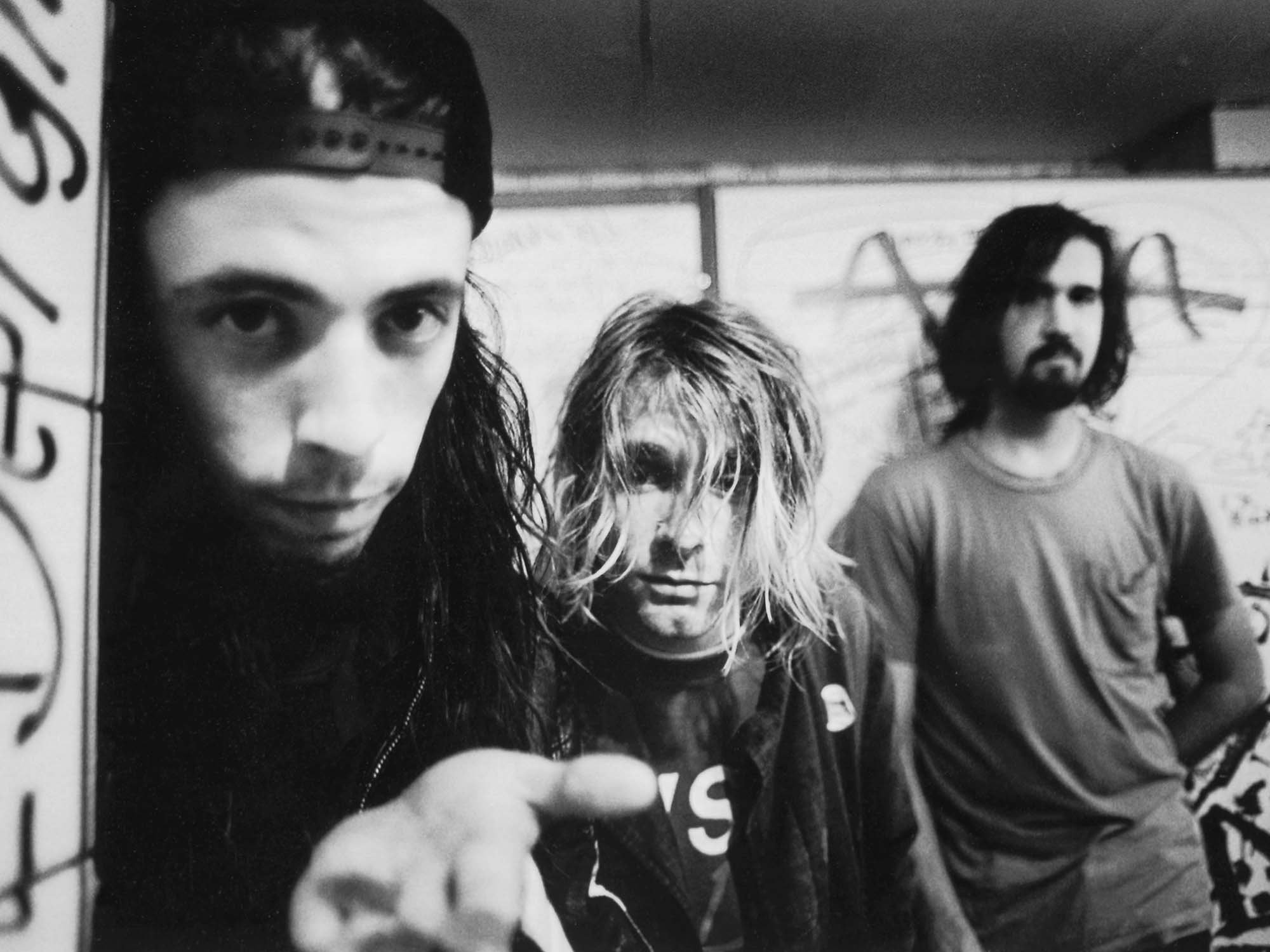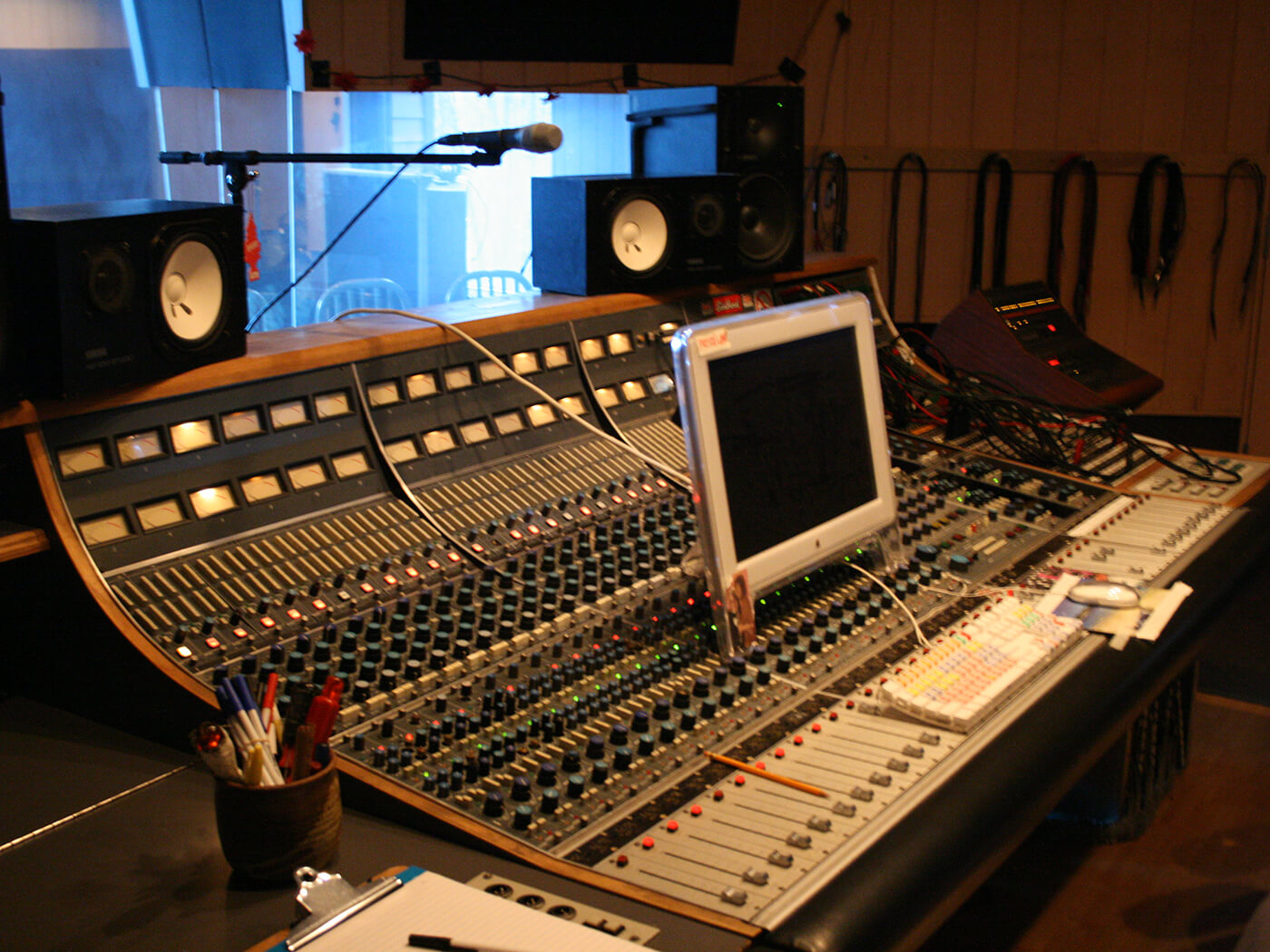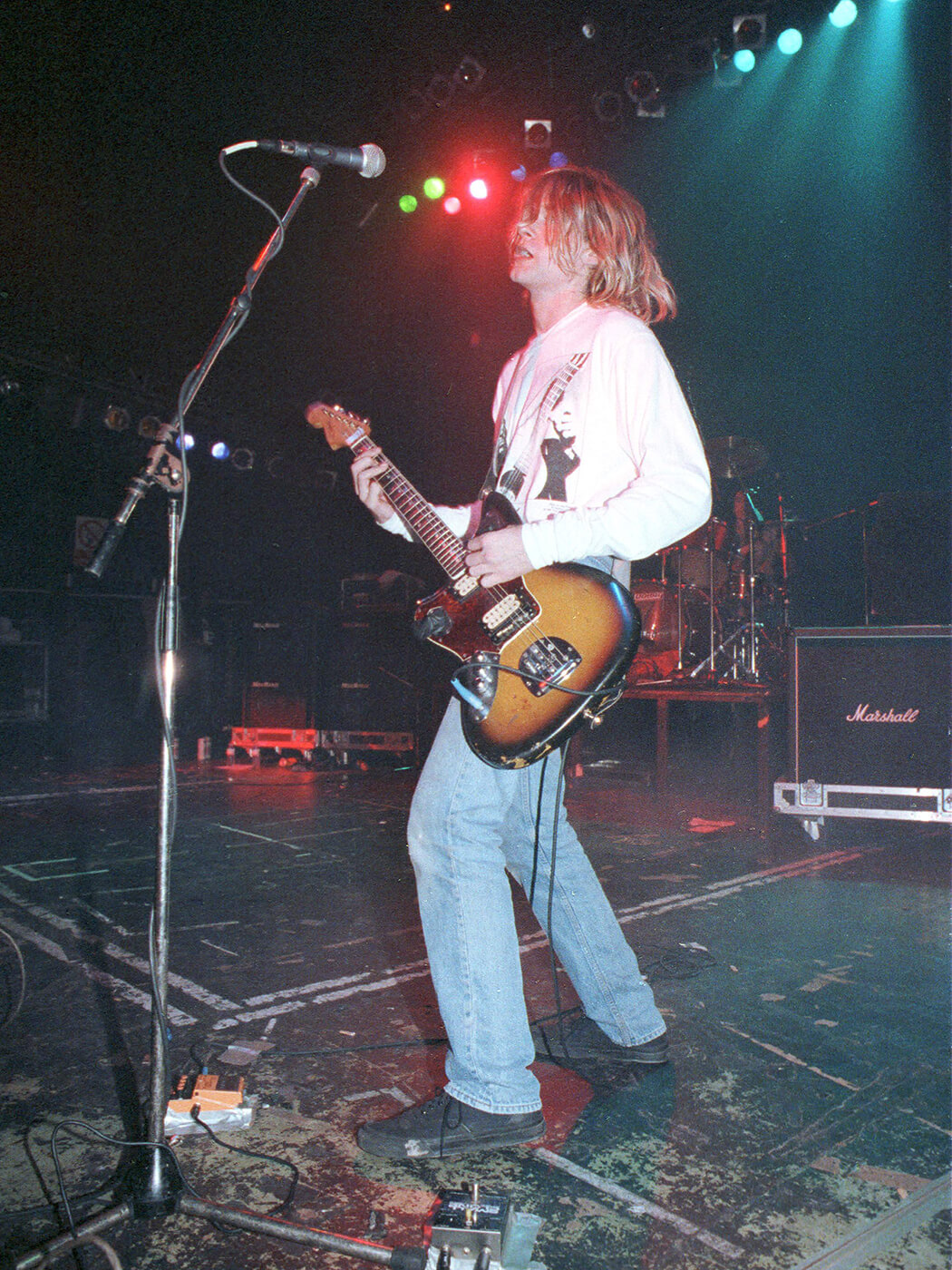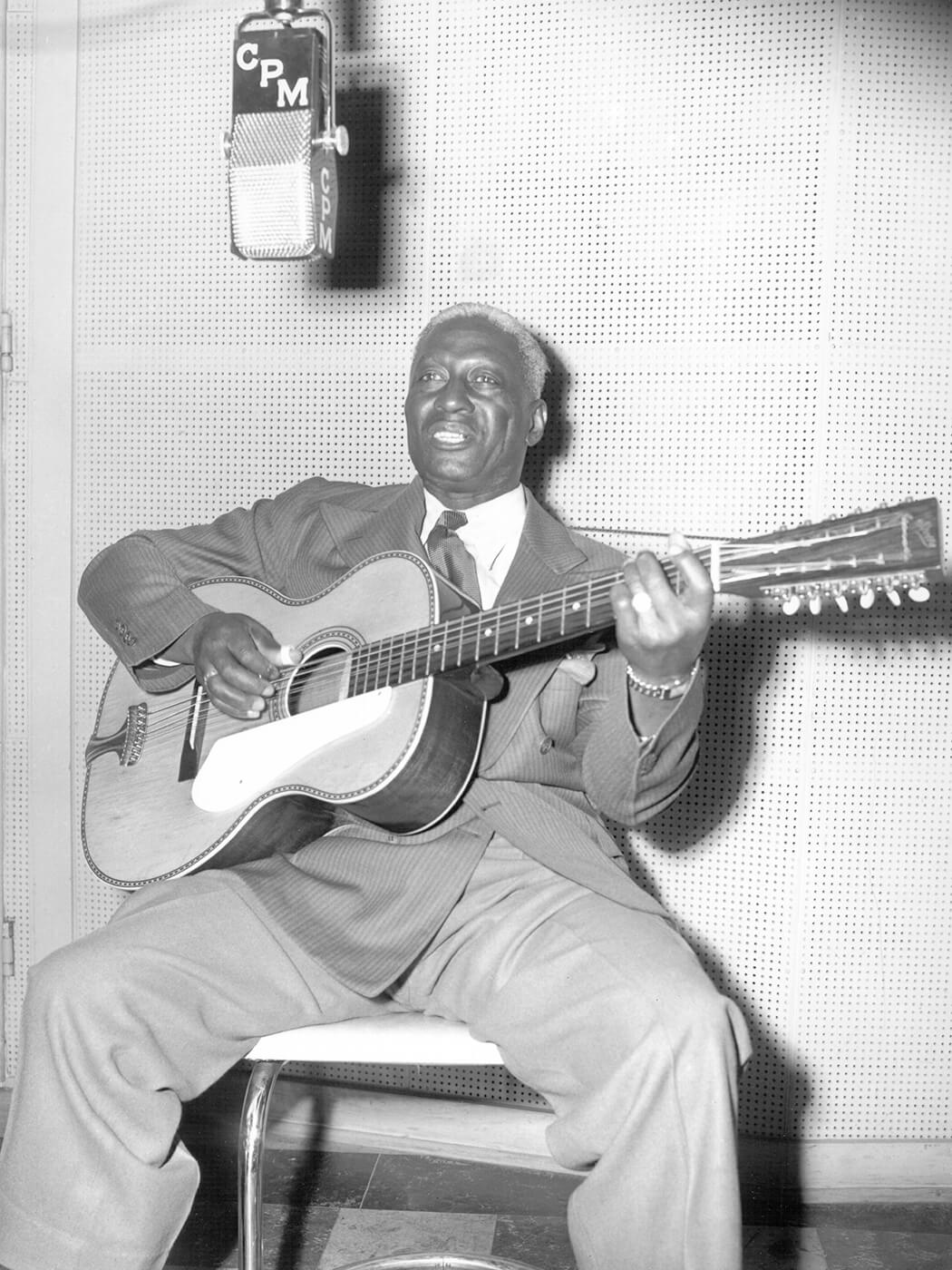Related Tags
The Gear Used on Nirvana’s In Utero
As Nirvana’s final studio album prepares to turn 30, we look back at the gear that created Cobain’s rawest statement

Image: Paul Bergen/Redferns via Getty Images
In February of 1993, Nirvana departed for Pachyderm Studios in Cannon Falls, Minnesota to record what would become their final studio album. While Februarys in Minnesota can be particularly brutal, Pachyderms Studios had its perks. It was a beautiful house, designed by Frank Lloyd Wright, with an indoor swimming pool, nestled in an old growth forest with a trout creek running through the very isolated property. The studio was in a detached building only a hundred feet or so from the house. The studio boasted a massive collection of vintage microphones and analog recording equipment.
The crown jewel of the studio was a Neve 8068 console that had made quite a journey before landing at Pachyderm. It was originally installed in Electric Lady Studios in New York City in 1979 [originally built at the factory in 1978], a studio that was commissioned by Jimi Hendrix in 1968, designed by architect John Storyk and audio engineer Eddie Kramer, and was completed in 1970. John Lennon’s Double Fantasy, AC/DC’s Back in Black was mixed on that board. Van Halen recorded all their pre-Van Halen demos on it.

Later on, the console was moved to another New York Studio called The Record Plant, where it was used by a lot of other iconic artists. In fact, John Lennon was on his way home from the Record Plant when he was killed. It was this console that Nirvana would record the basic tracks for the album that would become In Utero.
As for gear, Kurt Cobain primarily used his main Fender Jaguar for electric guitar parts – this was a 1965 model that Kurt got before the recording of Nevermind. He found it through an ad in the LA Recycler. The guitar was already modified when he bought it, with an aftermarket pickguard, the on/off phase switches had been replaced with a Gibson-style 3-way switch and the pickups were swapped out for two full-sized humbuckers – a DiMarzio PAF in the neck, and the bridge, a DiMarzio Super Distortion.
The bridge pickup would be swapped out during the subsequent In Utero Tour for a Seymour Duncan JB. But for the recording, it had the two DiMarzio pickups. Kurt did have another sunburst 1960s Jaguar that also had DiMarzio pickups when he bought it, but he had them swapped out for stock Fender pickups in the Fall of 1992, to the best of our knowledge, this one was not used on In Utero.

Among the guitars sent to Minnesota for the recording session was an Ibanez Les Paul although we are unsure if this guitar was used or not. We asked Kurt’s tech Earnie Bailey if Kurt ever used a Les Paul:
“Yes, but not a Gibson-built guitar and, to the best of my knowledge, for only one performance,” he explains. “He preferred the imported copies and owned two of them. And with that, he stated that he looked like Jimmy Page when he played his, and he would not play a Les Paul out in public. He did not want to look even remotely like the iconic guitar players that he grew up listening to.”
The cherry sunburst Ibanez Les Paul Custom was a left-handed guitar that had been modified when he bought it with DiMarzio X2N pickups and two mini switches for activating the coil taps. Again, we can’t be sure that he used this guitar on the record, but it’s interesting to know that a Les Paul style guitar was in his gear arsenal at all as that is not a guitar model we typically associate with Cobain.

For the acoustic parts, Kurt used his Stella 12-string, which was strung up with five nylon strings, which were said to have never been changed for his entire career. He bought this guitar from a pawn shop in October of 1989 for $29.00 plus $2.23 in sales tax (we know this because he kept the sales receipt). This guitar was purchased the same year that Kurt collaborated with Mark Lanegan on a project that was going to become a collection of Lead Belly cover songs – it was during these sessions that they laid down the track, Where Did You Sleep Last Night which would appear on Mark Lanegan’s album The Winding Sheet.
Incidentally, Lead Belly was also well known for playing a 12-string Stella acoustic.
As for amplifiers, Kurt mainly used his Fender Twin Reverb, but there was one other amplifier that we recently learned was used on In Utero – it was a Frankensteined amplifier built by Bailey, as he recently explained to us:
“Only one of my Frankenstein amps made it into the studio with Nirvana, and it began life as an old toasted Marshall chassis with a working power transformer pulled from a dumpster,” he recalls. “In the early 80s I was playing in a band at the time called Atomic Open House that did instrumental stuff with a surf and drag guitar sound and needed a high-volume amp that wouldn’t distort. So I found a Fender Dual Showman schematic and then sent a letter to Marshall Amplifiers in England requesting a schematic to see if I could create a clean amp hybrid using both. They sent a JCM800 schematic back and that began a month’s long obsession with getting that amp to sound nothing like a Marshall and more like a tube version of the Roland Jazz Chorus.
“Fast forward a decade and Krist [Novoselic] is frequently borrowing it for a studio bass amp and it gets sent out for the recording of In Utero. Several years ago, I spoke to Steve Albini and Bob Weston who said that in addition to bass, it was also used for clean electric guitar tracks on the album.”
As for effects, Kurt used his Boss DS-2, EHX Small Clone chorus, an Electro-Harmonix Polychorus that belonged to Earnie Bailey – this was most famously used on the solo of Heart Shaped Box, an EchoFlanger, and a Tech 21 Classic SansAmp. A common misconception is that Kurt used a Rotovibe – this myth was perpetuated by a note appearing in the tablature book for In Utero but this has been contradicted by several parties.
Beyond that it was the talent, passion and creativity of the band in the studio, creating a final statement from Cobain that would remain a cultural touchstone for decades to come.
